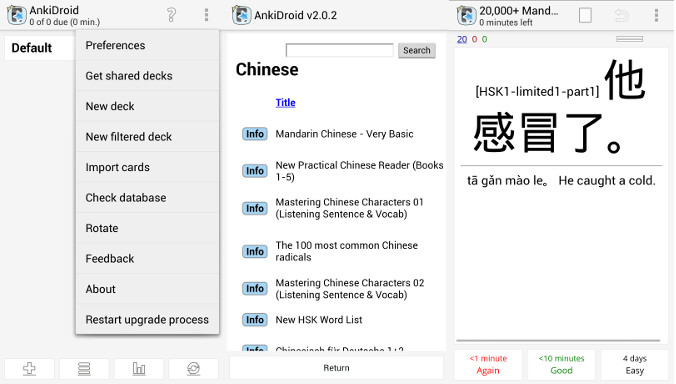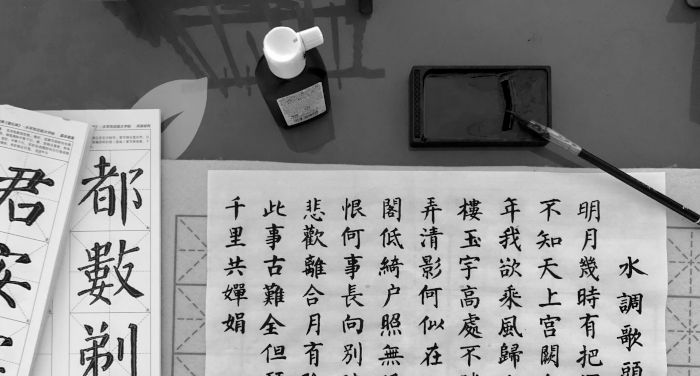
“There aren’t many actual shortcuts. Things that look like shortcuts are actually detours (disguised as less work),” Seth Godin.
Today I want to talk about Remember the Hanzi, an alternative method to remember Chinese characters.
If you never heard about it, I suggest you to read my review of the method before to keep reading this article.
Seven reasons for which you should avoid Remember the Hanzi (if your goal is to speak Mandarin as fast as you can)
- Remember the Hanzi provides only the meaning of the character. The method doesn’t take into account pronunciation and tone. Moreover, the book only teaches you the single characters, one by one. No grammar nor structure. And you have to learn a bit of structure if you want to speak Chinese. Please do not believe who tells you that “Mandarin hasn’t any grammar.”
- Many characters are easy to remember because you see them everyday, because they have a particular form or because you are able to recall the context in which you learned them. Unfortunately, if you are planning to follow the Remember the Hanzi‘s method, you should learn each character through a story. The reason is that the character may become the primitive of other characters later on (for instance 木+目+心=想). This method is based on the reverse engineer, which requires a disciplined imagination. There is no room for improvisation here!
- Because of the massive number of characters you are going to learn and the nature of the method, you must associate only a meaning per character. And it has to be the meaning that Heisig – the inventor of the method – suggested to you. This is necessary for avoiding mixing up the characters later on. However to associate a Chinese character to only a meaning is often misleading as the characters – especially the most common – may assume a lot of different meanings, depending on the context.
- Let’s suppose that you made up your little story to learn your character. You will be often forced to reconstruct the story to remember the meaning of the character. This process may take ten seconds or even more. Does this looks natural to you? Good, because neither to me. Someone will argue that after you repeat and revisit the character enough times, you’ll remember it quickly. Uh? Are you kidding me? The whole point of Remember the Hanzi is that you haven’t to go through endless repetitions to learn a character.
- The same discussion holds true for writing. The people that learn how to write Chinese characters with Remember the Hanzi are often slower. This method was invented in the seventies, in the pre-smartphones geological era. Nowadays there are more efficient tools to learn how to write Chinese characters, Skritter in primis.
- The more I speak with Chinese learners the more I get the impression that the majority of students that choose the Remember the Hanzi path are looking for a shortcut. Now, are you sure that going through 3,000 characters and invent a nice story for each of them so that you end up some months (or years) later with a theoretical knowledge that you can’t exploit yet to talk (see the first two points) is a shortcut? Because it looks like a lot of work to me. A very lonely one.
Am I saying that Remember the Hanzi is garbage and all the raving fans of Heisig are wrong?
Nope!
I think that Heisig had a fantastic idea and – most important – the perseverance to realize it. While he was a simple student of Japanese language in Tokyo he had the balls to challenge the old dinosaurs (that is the Japanese language Professors) and stand up to defend his method till he got his first version of the book published.
Also, Remember the Hanzi is an amazing taxonomy of Chinese characters and I recommend it to all the people that love characters for their intrinsic beauty (and don’t consider them as an obstacle between them and Mandarin), to the ones that can already speaking some Mandarin but are trying to take their skills (especially writing skills) to the next levels and to all the lovers of reverse engineering.
Learn Chinese: My lazy way (Month eleven)
I’m still in Italy so I didn’t practice Chinese that much.
I’ve kept at my Anki daily flashcards review and ChinesePod.
I’m also using Skritter since two months and I like it.
I think that it’s better to have a clear goal so my objective is to learn how to write the characters of the HSK lists (quite a long-term goal).
At the moment I practice writing with Skritter ten minutes per day and it’s a great fun.
Why only ten minutes? Because I’m afraid that if I use it too much I will burn out soon.
Photo Credits: Photos by Sapore di Cina




Hi Furio – thanks in turn for your reply. When your read this you will be safely in Bangkok!
I agree with the concern that people think that Heisig makes it effortless to learn to read & write Chinese. It’s not effortless, it takes work. I do however think that it takes less effort than brute force, which is why I chose Heisig.
I won’t go point by point (need to get to work!) but some quick thoughts …
– I think the word ‘story’ is misleading – although it’s used extensively in the context of Heisig; As with you I’m a visual person and so I use ‘images’ – stories are weaker and closer IMHO whereas an image is instantaneous
– The good news is that although you have to use his keyword, in the context of reading even if the wrong (bu similar one) comes to mind, then it still works; It only makes a difference when that keyword is in turn used for the next character, but luckily once you recognise characters without their story, this all falls away; especially as your regular reading then starts to have the context of compound words, etc.
I spend a fair amount of time in my blog also advising against the belief that you can learn Chinese quickly. I know that puts some people off, but in my opinion it’s the people that wouldn’t have stuck with it anyway :-) My most popular post on the topic was the tongue-in-cheek article Learn to speak Chinese fluently in 6 months.
Enjoy Thailand!
At the end our opinion isn’t that distant ; )
Yup, I’m in Bangkok, there are about 25 Celsius degree of difference from the Italian winter!
Quite a shock haha
Hi Furio
Full disclosure: I’m a fan of the Heisig approach. I’ve used it very successfully, have blogged extensively about it, and continue to recommend it.
I would like to make some comments on your article. Just to be clear: : I accept that everyone has their own style, and my goal isn’t to convince you to change your mind about Heisig. However you have a number of misconceptions about the method (and not surprisingly, since you’ve only done 100 pages) and it’s that I want to talk about.
1. “Heisig only presents the meaning, not the pronunciation”
WRONG
Actually, the book contains the full pinyin of every single character, and if you choose to learn the pronunciation that is your choice. I’ve tried with and without, and actually found it much more efficient to focus on the character the first time, and then add the pronunciation on a later read-through.
2. “Unfortunately … you should learn each character through a story”
WRONG that it’s unfortunate to use stories
What I found was that when I first did Heisig I used stories, and although it seemed slow, it’s faster than brute force! But after a while, you don’t need the story anymore – you just see and recognise the characters. The story disappears – it’s just the efficient tool you use initially.
3. “There is no room for improvisation”
WRONG
In the beginning the stories are provided to you, because most people aren’t good at creating images to remember things. But just a few hundred characters in, the stories are provided less often, and eventually there are not stories – just keywords. You have total freedom to improvise. (Actually, there is so much room for improvisation that some people can fall into bad habits. I have written articles on better and worse ways of creating stories – plenty of room indeed.)
4. “only [one] meaning is often misleading”
WRONG
This is Chinese. Single characters can have many meanings, and no matter what method you use, you have to deal with this. I think it’s misleading to imply that this is a Heisig problem. Long before trying Heisig I learned that 开/開 means open. Imagine my horror when I realised it could also mean to begin, to drive, to switch on. And look at the meanings you can get from 节/節 or 起 for example. Heisig is no more misleading than any other approach you might take.
5. “You will be often forced to reconstruct the story”
WRONG
With all due respect, you clearly haven’t used the Heisig method :-) It’s like arguing that someone who learns through Skritter will have to draw the characters stroke-by-stroke in their head before being able to recognise it. If I’m reading a text, it’s only a small number of characters that I may have to fall back on a story to remember them – but basically it’s pure full-character-recognition. No more stories on most of the characters I have learned.
6. “people that learn [snip] with Remember the Hanzi are often slower”
PROBABLY
Are ‘often’ slower? This is your guess, or you’ve actually tested a fair number of people? I have never compared my writing speed with non-Heisig people, but you are probably right. After all, if you’ve used Skritter then you’ve done each character dozens of times, so of course you’re better. But I ask myself … does it matter? I almost never have to write. I use pinyin input for emails and messaging, and I bet I am the same speed as you :-)
7. “theoretical knowledge … can’t exploit … to talk”
WRONG
It’s not theoretical, and it can easily be exploited. Sure it can’t be used to talk – but neither can Skritter. (See my opening comment – you can choose to learn pinyin at the same time if you want, just like with Skritter.)
8. “it looks like a lot of work to me”
WRONG
It took me three months to learn 1500 characters with very high recall, each step of the way blogged :-) The thing I found is that once I had learned the characters, I could easily concentrate on learning the pronunciations, reading and understanding (even if at stage 1 I couldn’t read out aloud), and I was able to start piecing things together myself.
Furio, again I want to emphasise that I’m not trying to prove you wrong, or convince you to take up Heisig. It’s clear that you prefer other methods, and that’s really OK. But I do disagree with WHY you don’t like Heisig. Just about every argument you present is based on a misunderstanding of the method – a method that you haven’t tried beyond 100 pages. I did book 1 in 3 months. Then a couple of years went by – and I messed around with other stuff during that time because book 2 wasn’t available – but now I’m working through book 2. I came back to this approach because it really works.
Thanks for a great blog, and for raising a topic like this for public debate. I enjoy your articles, and look forward to further discussion.
Greg
Hey Greg,
thank you for your long comment. No worries, it’s ok to disagree sometimes : )
Also, this method is highly controversial so it’s normal to disagree (just look at the Amazon.com reviews : p).
Anyway, my main message (but maybe I wasn’t that good to convey it) was that many people buy Remember the Hanzi for the wrong reasons, that is they believe that this system is a shortcut to learn, and in particular speak, Mandarin.
I tried to convey this idea since the initial quote from Seth Godin.
I just think that there is no shortcut here. It’s an alternative method, and it does work for someone (not everybody).
Right now I’m at Wien airport waiting for my flight to Bangkok so I may not be as precise I would like, but I will still try to answer to your points : )
[1] I quote Heisig from the introduction of the book:
“What you will not learn here is how to pronounce any of these characters or how to combine them to form new words.“
In the version of the book I was reading there is no pronunciation close to the character. You do get a table of pinyin at the end of the book but it’s in alphabetic order (with respect to pinyin) so that it becomes very difficult to check the pronunciation of every character while you learn them (they aren’t in alphabetic order of course).
I don’t have the book with me but you can check how the pages look like in the second photo here:
http://www.saporedicina.com/english/chinese-characters-remember-the-hanzi/
[2] I don’t like stories for mnemonics. I like to use images. The difference is subtle and it may come down to the fact that I have a strong visual memory while my auditive memory is shit. There is a great free Russian book that explains the difference between stories and images for mnemonics but now I can’t recall the title.
[3] My meaning was that you have to stick to the keywords Heisig gives to you. I know he doesn’t propose stories anymore after a while ; )
[4] Dunno. Because if you stick to Heisig method you will get only that meaning. But yes, I agree that Chinese may be tricky and I don’t have a solution to this “problem” haha
[5] Many people have this problem with the Heisig method. I was having troubles with that. But yeah, maybe I left it too soon.
[6] I should have specified it. I said “many people” (as for point [5]) because I read a lot of reviews of the method on the internet (mostly from Amazon, but I also talked with people that tried it when I was studying at Beiwai in Beijing) and this seemed to be a problem. I tried brute force in 2010, Hesig in 2011 and I’m trying Skritter right now. Yup, Skritter seems to be the fastest one to me.
[7] Nope, neither can Skritter. I wasn’t trying to compare the two methods.
Greg, the problem is that too many people get into Heisig method with the wrong mentality. They think: “Fuck, if I get the most common 3000 common done then I will be fluent in Chinese!”
This is the myth I wanted to “destroy.”Even if you know the 3000 common characters you won’t be fluent at all if this is all you did.
I know you didn’t follow for this trap, but many people do! So my article was more addressed to beginners.
It’s not a case that I close the article with the following sentence:
“Remember the Hanzi is an amazing taxonomy of Chinese characters and I recommend it to all the people that love characters for their intrinsic beauty (and don’t consider them as an obstacle between them and Mandarin), to the ones that can already speaking some Mandarin but are trying to take their skills (especially writing skills) to the next levels and to all the lovers of reverse engineering.”
Finally, as I wrote in the article I have an endless admiration for Heisig. I have a Ph.D. in engineering so I guess that you can believe me when I claim that I have a VERY analytical mind. So I believe that what Heisig did is wonderful.
I just don’t think that this is the fastest possible approach to learn how to SPEAK (I don’t care much about writing) Mandarin Chinese.
I promise to read your review of the method as soon I get the time : )
Thanks again for this long and thoughtful comment!
Furio
Hi Greg. When you aren’t trying to prove someone wrong, why do you write WRONG at the beginning of every point?
Maybe you should learn English.
Haha – thanks for coming round to add value to the discussion. Your insight and people-skills are appreciated.
LoL!